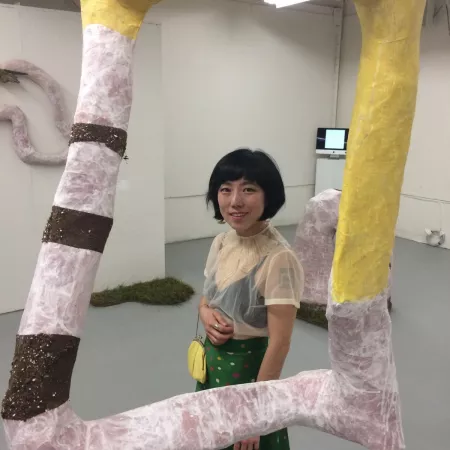Name:
Se Jong Cho
Ph.D.:
Environmental Engineering and Management
Hometown:
Seoul, Korea
SESYNC Project:
Evaluation and projection of global landcover change and impacts on water resources
How would you describe your primary field of study?
I am an environmental engineer with research interests in computer simulation modeling, and management and policy decision analysis.
What are the broad questions you are interested in studying?
I am interested in facilitating scientific data to address social and environmental problems.
What inspired you to choose this field of study?
I worked with stakeholders in Southern Minnesota, including farmers, conservation groups, and regulatory agencies, to mitigate water pollution as a part of my PhD research. This project revealed to me the critical gap in our understanding of how societies manage environmental pollution, which are made worse through anthropogenic forcing and climate change. This project also shed light on the potential for integrating shared understanding among scientists and policy makers to make effective management decisions to address complex social problem posed by environmental degradation and natural disasters. This work inspired me to investigate how scientific data can be made available through synthesis to make better management decisions.
Can you briefly describe your proposed SESYNC postdoctoral project?
Human transformation of Earth’s land surface to meet the requirements for food, water, and shelter has a profound impact on hydrological processes and ecological health. Climate change, with increases in precipitation and runoff, can exacerbate the water quality/quantity problem. Strategized landcover planning and allocation of natural infrastructures may alleviate the combined impacts of climate change, population growth, and economic development. I will first investigate past landcover change and its influences on water resources using data that characterize social and environmental dimensions of food, energy, and water systems. The research product will be visualized through interactive maps that will allow decision-makers to explore the impacts on water resources over time. I will then explore feasible landcover adaptation strategies for different future climate scenarios. A global water simulation model will be developed through synthesis of existing data, drawing on the relation between water quality/quantity and conversion of landcover, and will serve as a predictive basis for projecting the impacts on water resources for future landcover and climate conditions. A number of adaptive management scenarios with natural infrastructure implementation will be evaluated using this model to identify sustainable management strategies that are effective in safeguarding water resources from future changes in Earth’s land surface and climate. The simulation outputs will be demonstrated through interactive maps. The proposed work will advance our understanding and communication of human-environment system vulnerability and provide a strategic framework for sustainably managing water resources in the future.
Why is SESYNC the right place to undertake this research?
My research, which is to evaluate and project the global landcover and water resources management, is inherently interdisciplinary (e.g., evaluation of economic and social drivers of landcover change; understanding the biological implications of changes in water quantity/quality; and simulation of river flows to understand hydrological effects of landcover change). I believe that the diverse interdisciplinary culture at SESYNC will foster the opportunity to cut across disciplines to characterize the past, current, and future states of the Earth’s systems, and evaluate the impacts on water resources.
What are you reading right now?
Currently I am reading “Reality is not what it seems” by a theoretical physicist Carlo Rovelli; “Leonardo Da Vinci” by Walter Isaacson; and “Orlando: a biography” by Virginia Woolf.
